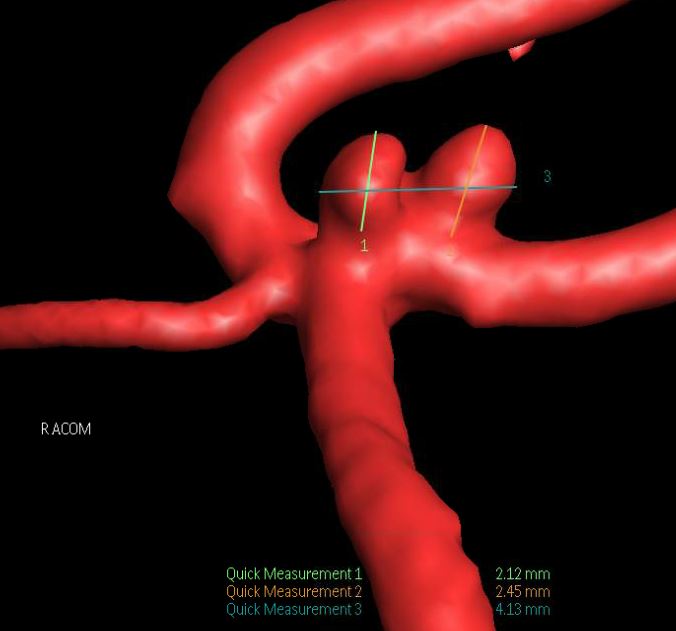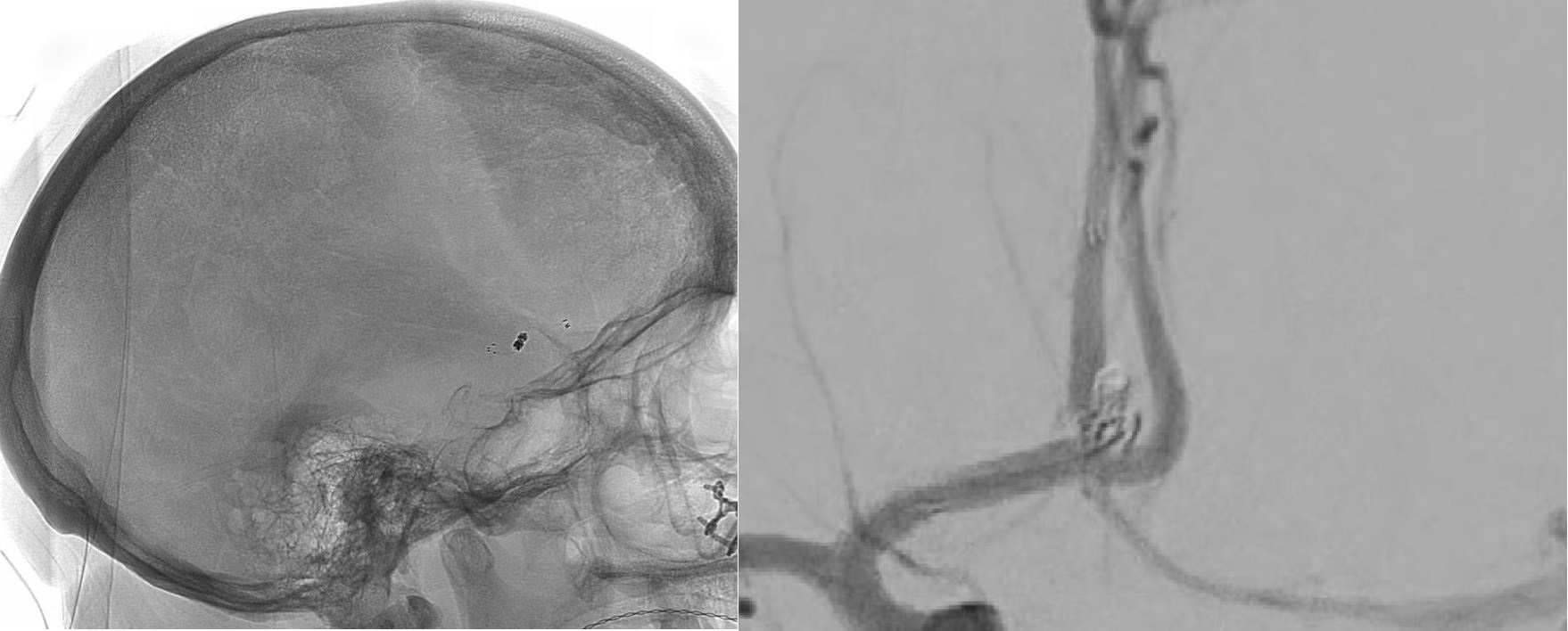Case Presentation: A 57-year-old African American woman with a past medical history of hypertension, type 2 diabetes mellitus, and pulmonary sarcoidosis underwent an MRI of the brain for evaluation of headaches. An incidental finding of a four-millimeter right-sided bilobed anterior communicating artery (AcoA) aneurysm was noted. The patient was then referred to Neurosurgery for elective treatment given the risk of rupture. Stent-assisted coil embolization was performed and her post-op hospital stay was uneventful. The patient was then seen by her Primary Care Physician seven days after the procedure due to the emergence of profound memory difficulties and was sent to the ED for further workup. She couldn’t recall coming to the hospital, basic events that occurred earlier in the day, or her recent procedure. Her long-term memory remained intact. A repeat brain MRI revealed acute ischemia involving the anterior column of the fornix bilaterally as well as several tiny early subacute infarcts in the right corona radiata and centrum semiovale. Her transthoracic echocardiogram was negative for a patent foramen ovale, and subsequent stroke workup was also unremarkable. The patient was diagnosed with acute anterograde amnesia secondary to her recent procedure. She was started on occupational therapy and showed improvement in her mentation during the course of hospitalization. She was discharged on dual antiplatelet therapy with plans to pursue cognitive and occupational therapy in the hopes of further improving her memory and functionality.
Discussion: On review of literature, this may be the first report documenting anterograde amnesia with stent-assisted coil embolization. The fornix is a part of the hippocampus that helps to encode new episodic memory. The anterior columns of the fornix are supplied by the subcallosal artery, which arises from perforating branches off of the posterior ACoA. Occlusion or damage to these perforating arteries leads to a forniceal stroke. Stent-assisted coil embolization of aneurysms is one of the latest modalities in treatment. Some of the well-known complications include thromboembolism and aneurysmal rupture, but many other consequences are yet to surface.Two large prospective studies have shown that the risk of aneurysmal rupture only increases with a size of more than seven millimeters. Given that the size of this patient’s aneurysm was four millimeters, a conservative approach would have been more beneficial. Such interventions, even though considered relatively safe, come with a variety of lesser-known complications about which patients need to be educated.
Conclusions: Coiling of an anterior communicating artery aneurysm can lead to anterograde amnesia. This case highlights the burden of morbidity and mortality associated with undue interventions for incidental findings.


